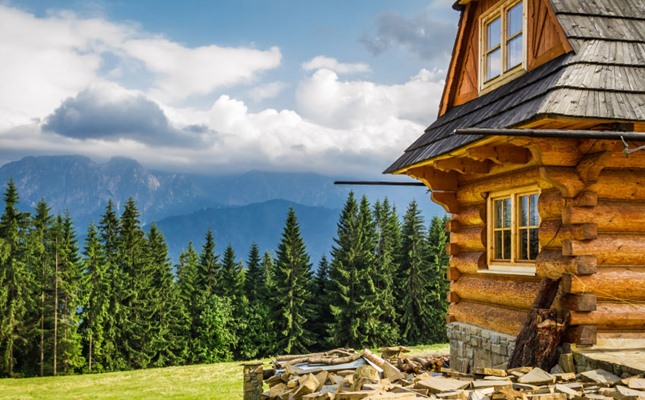[fshow photosetid=72157637036762214]
Up until recently, my strongest – or should I say weakest – point of reference for Alaska was that travesty of a Governor – Sarah Palin. I had alternately laughed and cringed, while at the same time wondering how she became a Governor in the first place. Now one might say she would be enough of a reason to cross Alaska from my bucket list, but I decided to bury my prejudice and travel to the USA’s frontier state with an open mind.
From a geographical perspective, Alaska might as well have been a territory in its own right as it is completely removed from the land mass of the USA by British Columbia. Purchased by the US from Russia in 1867 for the humble sum of USD7.2 million, the territory was for many years regarded as a wasteland and was only made a State of the Union in 1959. Today, however, Alaska plays an important role in the US economy as a state with rich natural resources such as oil, gold, gas and fisheries.
Anchoring in Anchorage
I started my trip in Anchorage, a unified home-ruled municipality of the south-central part of the state. That loosely translates to the state capital and the city is also the economic and cultural centre of Alaska with more than 40 percent of the state’s population living there. The city’s airport, Ted Stevens Anchorage International Airport, named after the US Senator from Alaska serving from 1968 to 2009, is served by major American airlines and was a major transit airport for passengers flying between Europe and East Asia until the 1980s, partly because Chinese and Soviet airspaces were off-limits and because planes at that time didn’t have the capacity to fly nonstop over the Pacific Ocean.
From a traveller’s perspective, Anchorage is perhaps best known for Kenai Fjords National Park which lies at the edge of the Kenai Peninsula just south of the city and named for the many fjords carved by glaciers moving down from the mountains. The park is home to the Harding Icefield, which spawns more than 40 glaciers of various types, some more accessible than others. I had rented a car in Anchorage which made my journey around the peninsula very easy. Kenai Fjords National Park also has plenty of camp sites for those wanting to stay a bit longer.
Combining industry with nature
After Anchorage and the Kenai Peninsula I travelled east to the town of Valdez. Located at the head of a beautiful deep water fjord in the Prince William Sound, Valdez was the gateway between coastal and interior Alaska and one of the historical sites of the Gold Rush of 1898. The Valdez Glacier Trail, carved by the thousands of people in search of gold became established as the All-American route to the gold fields. Today, this is the route of the Richardson Highway and the Trans-Alaska pipeline from Prudhow Bay in the north of Alaska and Valdez in the south.
Valdez is still a centre for enterprise and the town and its surrounds are known for oil and fishing industries, as well as a sizeable tourism industry. Most people travel to Valdez not for its fish or oil, but for its breathtaking beauty thanks to a location by the Prince William Sound and at the foot of the Chugach Mountains. Valdez is popular with visitors both during summer, when the ice and snow melts forming majestic waterfalls down the mountain sides, and during winter when the area transforms into a giant alpine wonderland with abundant opportunities to get your adrenaline pumping with downhill and cross country skiing, snowboarding and ice climbing.
When I visited Alaska in June, the weather was mild but still fresh and I decided to take one of the many boat excursions on offer in Prince William Sound. The tour took us to Columbia Glacier, the second largest in North America and the largest in Prince William Sound where the tour operator said there were chances of seeing Humpback, Killer, Minke, and Gray whales as well as seals, sea lions and otters. Sadly, on that specific day they were hiding. However, on board I met a local couple who confirmed that there are indeed common sightings.
Log cabins
After Valdez I headed north to Maclaren Lodge, by the Denali Highway. The area is famous for the Maclaren glacier and during summer the mountainous area is popular with hikers and wildlife photographers. What I came for, however, was to get a chance to stay in a traditional log cabin and for the long daylight hours – the sun doesn’t set till around midnight and rises again as early as 4.20 in the morning! During winter, due to the altitude, the northern lights can be seen in green and yellow hues. Log cabins are a common form of accommodation and come with varying degrees of comfort and modern amenities, ranging from modern, fully fitted, multi-bedroom cabins to more modest single-room cabins where the only source of heat is a fireplace. The area around Denali Highway and Denali National Park has no shortage of traditional log cabins where visitors can get a feel for what it was like living in Alaska 100 years ago.
Planning your Alaskan adventure
Alaska can be a challenge to visit due its remote location and relentless climate, but with a little advanced planning it is a fascinating, inspiring location for a unique holiday.
- Fly to Anchorage from major cities in the US with Alaska Airlines. http://www.alaskaair.com/
- Drink at a local brewery in Anchorage
- Renting a car is the easiest way to get around in Alaska and still enjoy the surroundings. http://www.enterprise.com/car_rental/deeplinkmap.do?bid=2273
- One of the best ways to explore the natural beauty of Valdez is on board a cruise on Prince Williams Sound. Lu Lu Belle arranges various trips depending on your specific interests http://lulubelletours.com/

